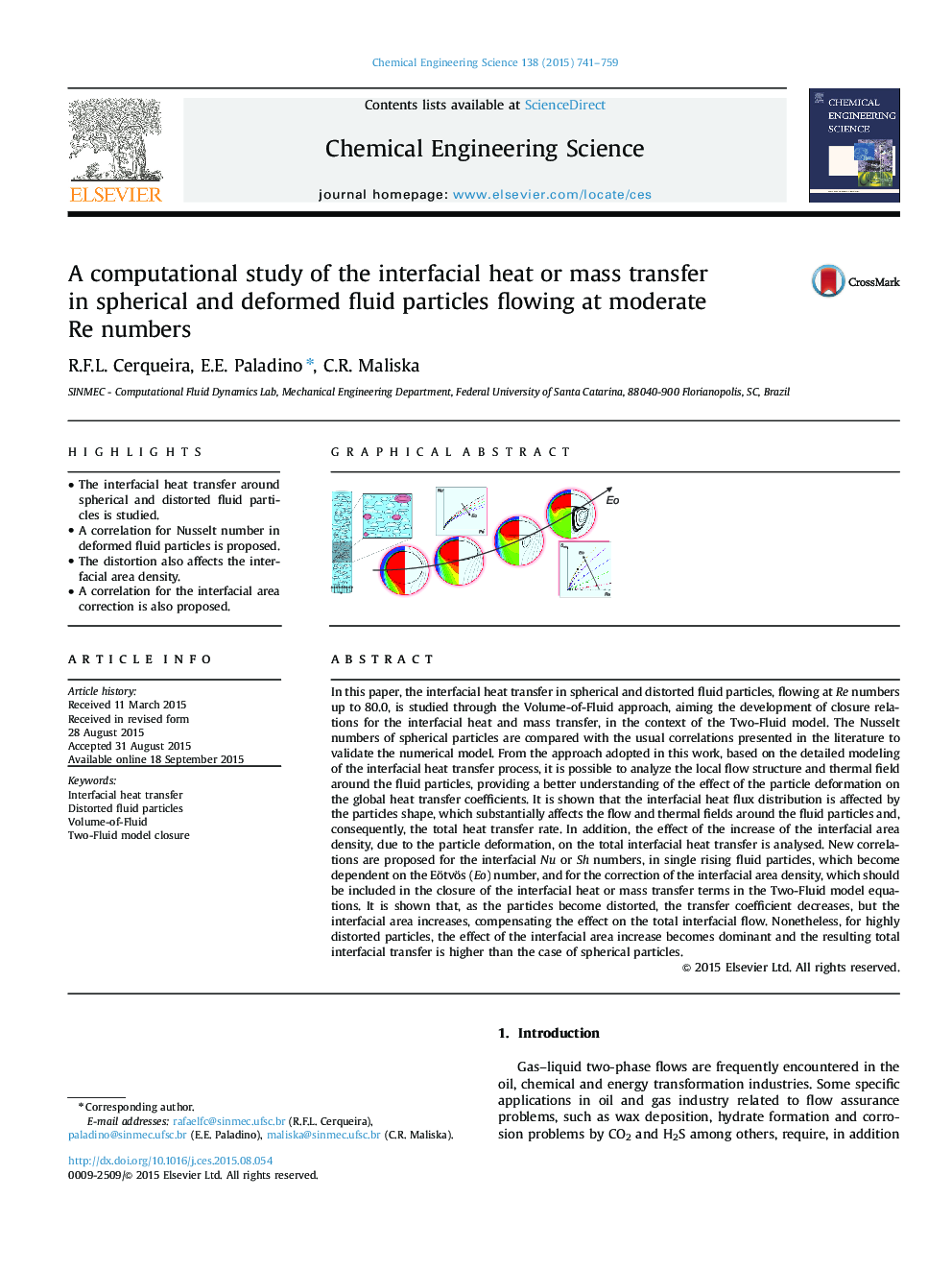| کد مقاله | کد نشریه | سال انتشار | مقاله انگلیسی | نسخه تمام متن |
|---|---|---|---|---|
| 154646 | 456846 | 2015 | 19 صفحه PDF | دانلود رایگان |
• The interfacial heat transfer around spherical and distorted fluid particles is studied.
• A correlation for Nusselt number in deformed fluid particles is proposed.
• The distortion also affects the interfacial area density.
• A correlation for the interfacial area correction is also proposed.
In this paper, the interfacial heat transfer in spherical and distorted fluid particles, flowing at Re numbers up to 80.0, is studied through the Volume-of-Fluid approach, aiming the development of closure relations for the interfacial heat and mass transfer, in the context of the Two-Fluid model. The Nusselt numbers of spherical particles are compared with the usual correlations presented in the literature to validate the numerical model. From the approach adopted in this work, based on the detailed modeling of the interfacial heat transfer process, it is possible to analyze the local flow structure and thermal field around the fluid particles, providing a better understanding of the effect of the particle deformation on the global heat transfer coefficients. It is shown that the interfacial heat flux distribution is affected by the particles shape, which substantially affects the flow and thermal fields around the fluid particles and, consequently, the total heat transfer rate. In addition, the effect of the increase of the interfacial area density, due to the particle deformation, on the total interfacial heat transfer is analysed. New correlations are proposed for the interfacial Nu or Sh numbers, in single rising fluid particles, which become dependent on the Eötvös (Eo) number, and for the correction of the interfacial area density, which should be included in the closure of the interfacial heat or mass transfer terms in the Two-Fluid model equations. It is shown that, as the particles become distorted, the transfer coefficient decreases, but the interfacial area increases, compensating the effect on the total interfacial flow. Nonetheless, for highly distorted particles, the effect of the interfacial area increase becomes dominant and the resulting total interfacial transfer is higher than the case of spherical particles.
Figure optionsDownload high-quality image (410 K)Download as PowerPoint slide
Journal: Chemical Engineering Science - Volume 138, 22 December 2015, Pages 741–759
